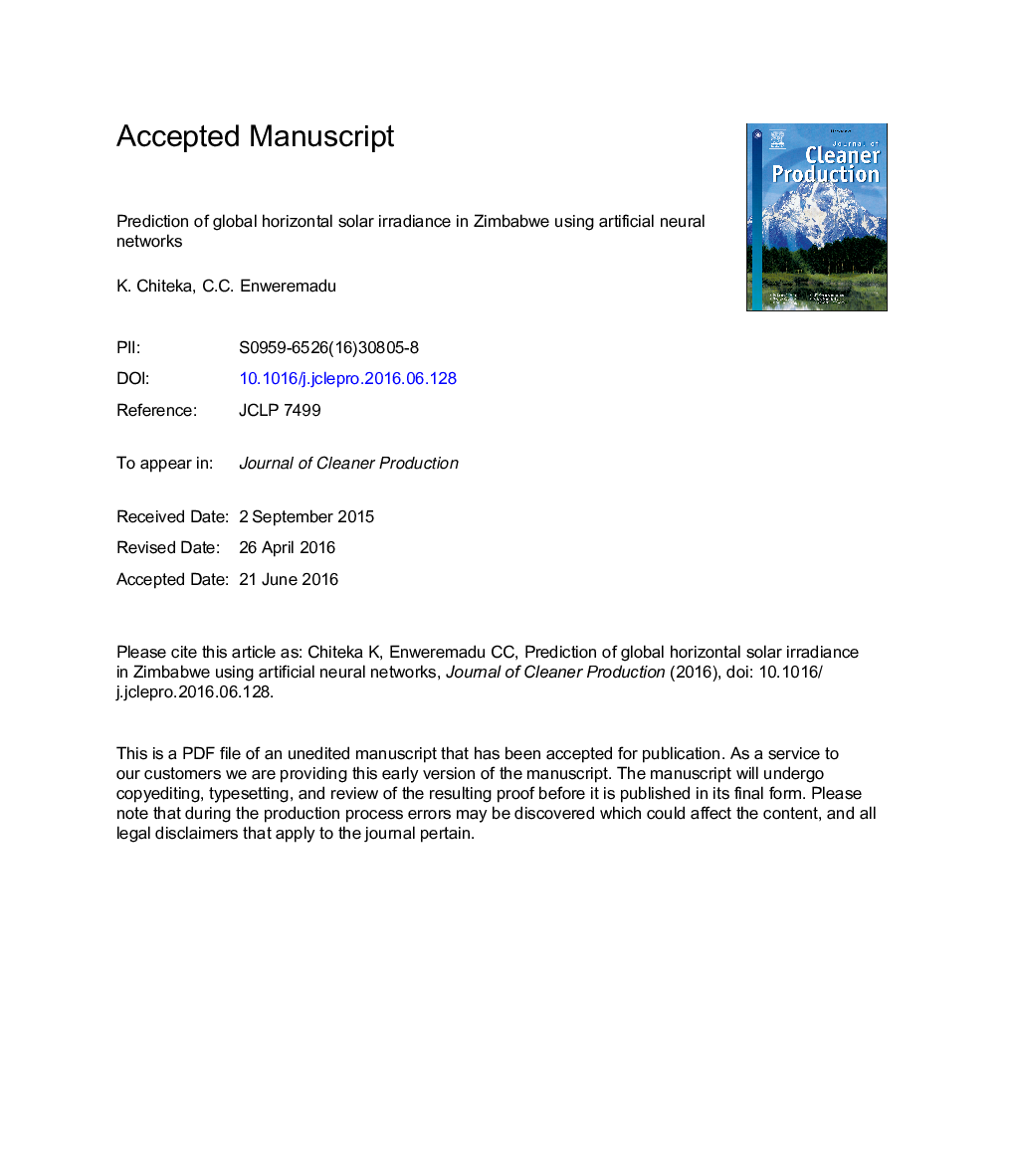| Article ID | Journal | Published Year | Pages | File Type |
|---|---|---|---|---|
| 8101255 | Journal of Cleaner Production | 2016 | 31 Pages |
Abstract
Reliable knowledge of solar radiation is a requirement for informed design and deployment planning of solar energy delivery systems. This study presents the artificial neural network approach for predicting global horizontal irradiation for major locations in Zimbabwe. The prediction of global horizontal irradiation was carried out using geographical data of altitude, latitude and longitude and meteorological data of humidity, pressure, clearness index and average temperature. A neural network with an input layer that has seven inputs was used together with one hidden layer and an output layer with one output. A network with 10 neurons and a tansig transfer function in both the input and output layers was found to be the best predictive model of all of the models evaluated. This network achieved a coefficient of determination of 99.894%, a root mean square error of 0.223Â kWh/m2/day, a mean absolute error of 0.17Â kWh/m2/day and a mean absolute percentage error of 2.56%. The study shows that the artificial neural network model can also be used to predict global horizontal irradiation the day before and the day after with mean absolute percentage errors of 5.9% and 7.6%, respectively. Statistical analysis of the results indicates that the clearness index, temperature and humidity had significant contributions of 19%, 18% and 17%, respectively, to the general performance of the artificial neural network model. An artificial neural network model developed using the clearness index alone as the input parameter gave a mean absolute percentage error of 5%. It may, therefore, be concluded that the clearness index could be used as the only parameter to predict global horizontal irradiation.
Keywords
Related Topics
Physical Sciences and Engineering
Energy
Renewable Energy, Sustainability and the Environment
Authors
K. Chiteka, C.C. Enweremadu,
